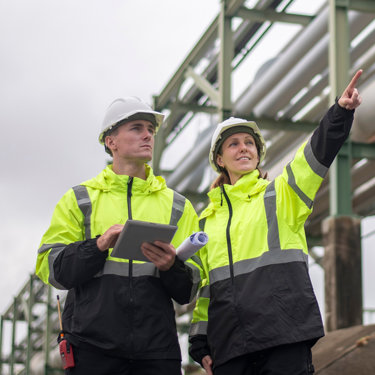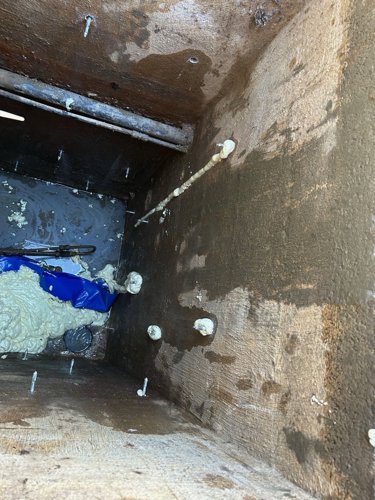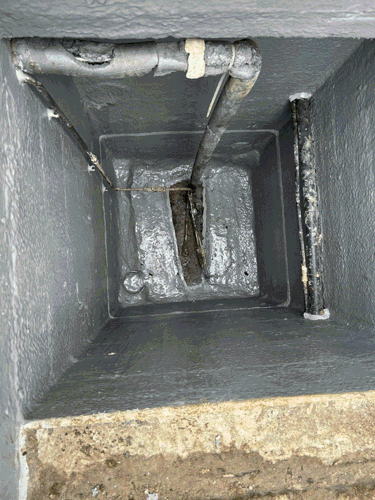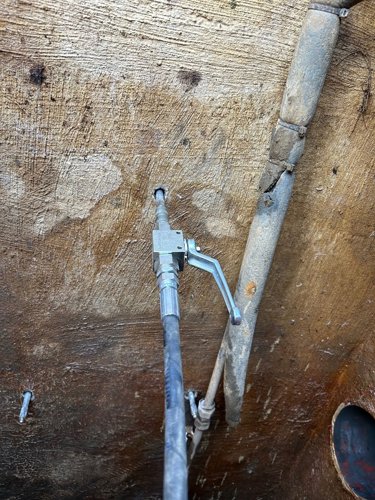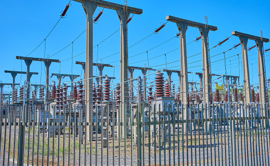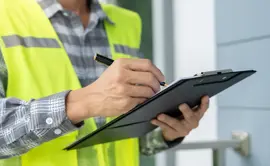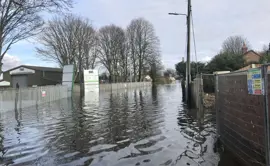Sealing the flow: Combining polyurethane resin and polyurea coating to provide a smart solution to groundwater ingress
Published: 24 April 2025
Framing the challenge
Thames Water identified significant groundwater ingress within several valve chambers on both clean water and wastewater sites, leading to operational inefficiencies and infrastructure damage. The ingress was causing persistent water accumulation, increasing regular maintenance costs, and posing a risk to the long-term integrity of the chamber and infrastructure within it.
We were asked to develop a cost-effective remediation approach using our market-leading coating capability to form a waterproof retrofit solution. This solution focused on providing a lower-cost alternative to the continuing reactive maintenance requirements or additional cost of replacing the chambers.
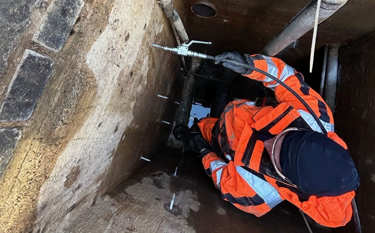
Approach and implementation
Following a detailed site inspection and a root-cause assessment of the issues, we developed a bespoke solution to address the ingress issues.
Chambers either received a polyurethane injection resin to prevent ingress, or an additional application of a polyurea coating, to the internal walls of the chamber after resin injection.
The high-performance polyurethane injection resin reacts with the infiltrating water, forming a hydrophobic, semi-flexible foam that expands, effectively sealing cracks, voids, and joints, where groundwater is entering. With rapid curing properties, the fast-setting resin is ideal for immediate control of water ingress, providing a durable and lasting solution. This ensured that water could no longer penetrate the chamber walls.
After the ingress was controlled, a robust polyurea protective coating was applied to the internal surfaces of some chambers. This coating provides an additional layer of protection, preventing future deterioration caused by moisture exposure, chemical attack, and mechanical wear. The tough, elastic nature of polyurea makes it highly resistant to mechanical wear and allows it to bridge minor cracks that may develop over time, maintaining the integrity of the protective layer it is forming.
Impact and outcomes
The combination of polyurethane resin and polyurea coating successfully eliminated groundwater ingress, restoring the structural integrity and functionality of the chambers.
The project resulted in:
- Reduction in water ingress, eliminating the need for regular, reactive maintenance and the associated costs.
- Enhanced durability and long-term protection of the chambers, reducing future repair costs and potential asset replacement costs.
- Improved operational efficiency and increased asset lifespan, delivering significant whole-life cost improvements.
This innovative approach not only solved an immediate operational issue, but also provided a sustainable and cost-effective solution, for long-term infrastructure management.
More from our Knowledge Hub
Environmental compliance today, creating a sustainable tomorrow
Helping you reduce risk to the environment and your operation by managing assets compliantly while achieving commercial, ESG, and net-zero goals.
Contact our experts